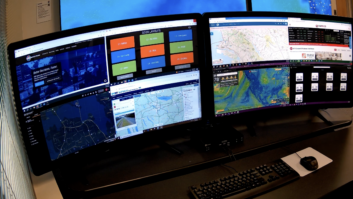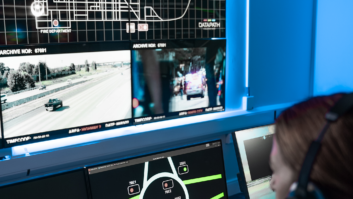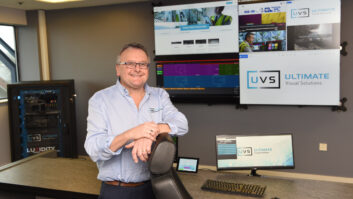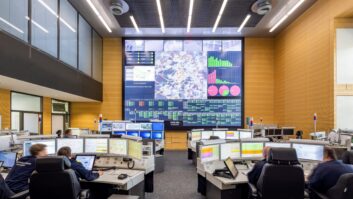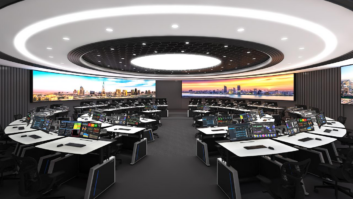It should come as no surprise to discover that control system requirements for industrial control rooms and other related environments have always been uniquely exacting. From nuclear power stations to manufacturing facilities, the stakes can be extremely high in terms of performance, operability, stability and – last but definitely not least – security.
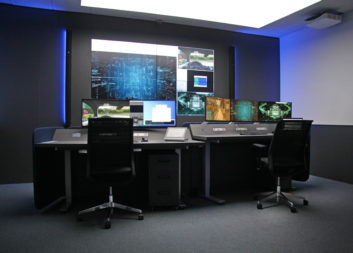 Several primary trends have impacted upon what – for the purposes of conciseness in this article – we are going to label the ‘control room’ market. Decades on from when the term first entered popular currency, KVM (keyboard, video and mouse) hardware switching remains a prominent technology, enabling users to control multiple computers from one or more sets of keyboards, video monitors and mice. During the past ten years or so, the advent of IP-based KVM solutions has brought a new level of flexibility to control room applications – especially those where usage patterns are more complex or there is an acute need for effective remote working.
Several primary trends have impacted upon what – for the purposes of conciseness in this article – we are going to label the ‘control room’ market. Decades on from when the term first entered popular currency, KVM (keyboard, video and mouse) hardware switching remains a prominent technology, enabling users to control multiple computers from one or more sets of keyboards, video monitors and mice. During the past ten years or so, the advent of IP-based KVM solutions has brought a new level of flexibility to control room applications – especially those where usage patterns are more complex or there is an acute need for effective remote working.
No prizes for guessing that remote working has become an even greater priority for many industrial customers over the past 18 months – a requirement that is surely here to stay in this new era of hybrid working. But there are also signs of a further ramping-up of security provisions in light of a wave of major cyber-attacks targeting sectors such as energy and food production.
LEADING PLAYER
Based in the city of Siegen, Guntermann & Drunck GmbH has been a leading player in the provision of KVM solutions for well over 30 years. Today it serves a myriad of applications – ranging from airport control towers to industrial facilities, maritime environments and broadcast – with the consistent underlying premise that KVM can allow customers in every sector to “make the most of any IT installation,” says G&D director sales & marketing Jochen Bauer. “That applies whether you want to operate several hundred computers from one workstation – or have extended access to computers to up to 10,000 metres.”
Reflecting on the last half-decade of control technology progress, G&D field application engineer Andreas Gerlach places many of these developments in the context of Industry 4.0. Sometimes also referred to as the Fourth Industrial Revolution, this trend concerns the ongoing automation of manufacturing and industrial applications. It typically includes developments such as the Internet of Things (IoT) and machine-to-machine (M2M) communication, as well as assorted smart technologies that can monitor, analyse and diagnose potential problems without the need for human input.
“With Industry 4.0 you have this move towards more interconnection throughout [a facility] as well as stronger and more reliable network operations,” explains Gerlach. “This is resulting in a greater deployment of IP-based processes, and of course KVM is part of that too. In addition, there are other trends that are influencing our development of technology such as virtualisation and cloud computing, which are going to lead to more hybrid installations. For example, you might have your physical computers on-site, but for emergency purposes and some specific control processes these will be combined with cloud and virtualisation.”
CHALLENGING CIRCUMSTANCES
With an awareness of both the options now facing customers and the challenging circumstances of the pandemic, G&D’s latest developments include the Control Center Xperience (CCX) and its related demonstration capabilities. Formally launched last November, CCX allows a permanently installed control room to be experienced in real-time – including remotely via livestream. Demo appointments allow potential customers to explore how various systems and technologies interact, with G&D personnel able to guide them towards a suitable solution through the consultation.
“It gives a lot of scope for customers to explore how different control room configurations can work, and from our perspective makes it easier to give detailed advice to customers in Europe and elsewhere,” says Bauer.
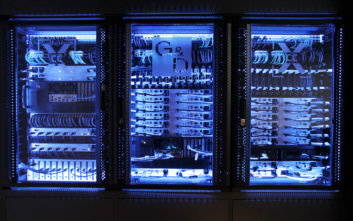 Meanwhile, products such as the award-winning RemoteAccess-CPU modules acknowledge the trend towards integrating virtual machines in KVM installations and then operating them remotely. The modules establish a connection between matrix systems and virtual machines, which can be accessed remotely via network protocols such as RDP, VNC and SSH. “This way,” notes Gerlach, “hybrid systems with real and virtual computer infrastructures can be optimally implemented.”
Meanwhile, products such as the award-winning RemoteAccess-CPU modules acknowledge the trend towards integrating virtual machines in KVM installations and then operating them remotely. The modules establish a connection between matrix systems and virtual machines, which can be accessed remotely via network protocols such as RDP, VNC and SSH. “This way,” notes Gerlach, “hybrid systems with real and virtual computer infrastructures can be optimally implemented.”
Another recent launch, RemoteAccess-GATE, means that customers can remotely operate KVM systems over the Internet, LAN or WAN. A standalone device that connects the “two worlds” of KVM and networks, the solution provides unblocked-BIOS (basic input/output system) level access to connected computers worldwide. Especially in the context of Covid-19, notes Gerlach, “the ability to link company sites around the world and access computer systems at different locations from anywhere is becoming more important than ever.”
Looking ahead, Bauer anticipates that the demand for KVM over IP solutions will continue to rise as fully networked environments become even more widespread. “There is no doubt that scalability and flexibility are in general much easier to achieve via an IP network, and I think those factors are going to remain very important for control room environments,” he says.
In the meantime, G&D continues to add prestigious new credits to its project roll-call, including a recent control room installation for an oil exploration company. The programme of work centred upon an Onshore Collaboration Center that has been devised to allow for better collaboration as well as more efficient drilling and wells operations. Gerlach observes: “This is a high-end control room where our KVM systems have been used to build the backbone of the entire IT.”
UNIFIED APPROACH
The combination of KVM and virtualisation technology is also a continuing preoccupation for Black Box, whose presence in this area of the market was underlined when it acquired Cloudium Systems in 2016. Previously the founder and CEO of Cloudium Systems, John Hickey is now senior director responsible for Black Box’s worldwide KVM business.
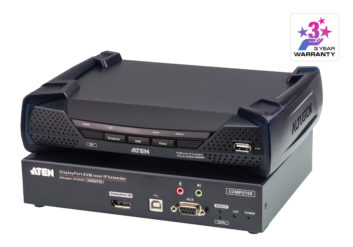 Of the company’s present range, Hickey identifies the Emerald KVM-over-IP matrix switching system as being among its “flagship” solutions. Designed to deliver high-quality HD or 4K video over a dedicated or existing IP network, Emerald allows reliable extension and switching of video (DisplayPort or DVI), transparent USB 2.0, and bi-directional analogue audio signals over an IP network. To extend KVM signals over long distances, Emerald transmitter and receiver units can be combined with SFP modules such as Emerald PE and Emerald 4K. It’s also possible to add a managed IP switch and the Boxilla KVM Manager to an Emerald solution to create a matrix switching system – thereby supporting connectivity for any combination and numbers of users, and physical as well as virtual servers.
Of the company’s present range, Hickey identifies the Emerald KVM-over-IP matrix switching system as being among its “flagship” solutions. Designed to deliver high-quality HD or 4K video over a dedicated or existing IP network, Emerald allows reliable extension and switching of video (DisplayPort or DVI), transparent USB 2.0, and bi-directional analogue audio signals over an IP network. To extend KVM signals over long distances, Emerald transmitter and receiver units can be combined with SFP modules such as Emerald PE and Emerald 4K. It’s also possible to add a managed IP switch and the Boxilla KVM Manager to an Emerald solution to create a matrix switching system – thereby supporting connectivity for any combination and numbers of users, and physical as well as virtual servers.
“We see the movement towards [KVM over IP] being well-underway, driven by the familiarity with IP among IT professionals, who understand its scalability and cost-efficiency,” says Hickey, alluding to the low-cost of Ethernet switches. “Then as [customer needs develop] you can aggregate multiple switches very easily with IP.”
LATEST STAGE
For Adder Technology’s vice-president sales EMEA Jamie Adkin, it is possible to see the rise of KVM over IP as the latest stage on a trajectory that goes “back to our foundations as a company and almost to the foundations of KVM itself, which were really about server management and accessing computers in data centres and so on.” Utilising KVM over IP therefore brings a further flexibility for installations requiring “connectivity between different campuses, buildings or facilities. [IP-based] products have seen huge growth in control rooms for the last 5-10 years.”
Recognising the growing need to accommodate both virtual and physical machines, ADDER’s current products include the ADDERLink INFINITY 3000. The dual-head, USB2.0 IP KVM extender allows users to seamlessly and securely switch between virtual and physical machines directly from their user workstations – without the need to rip and replace existing KVM infrastructure. Meanwhile, geared towards “improving IT scalability for small to medium businesses”, the ADDERLink XDIP KVM extender or matrix solution utilises a standard 1Gb/s IP network to allows users to extend and manage critical PCs with ultra-low latency and HD video. An API delivers remote control of the matrix and allows the XDIP to be integrated into larger systems, controlled by third party software.
Underlying the rise in 4K video and the desire to create, control and view high resolution content in real-time, the ADDERLink INFINITY 4000 is designed to support the migration to “4K and beyond” – with 5K and HDR among the cited formats. The objective here, indicates Adkin, is providing customers with the scope to streamline “high resolution workflows, giving your users instant access to their target PCs and delivering the flexibility to grow your business.”
STEADY PROGRESS
Nicolas Jaud, product technical manager at ATEN, charts the steady progress of IP-oriented KVM over recent years. “We have been selling KVM over IP products for a decade now, and what we recall is that the [technology] was mostly designed for data centre allocations in the beginning,” he says. More recently, there has been a greater demand for solutions that “enable working from home” or other locations to have the same kind of control at distance flexibility – hence KVM over IP’s more rapid adoption lately.
As a result ATEN has continued to evolve a range of products that delivers “KVM over IP with high performance capacity”, such as the KE series of KVM over IP transmitters that can deliver superior video quality (up to 1920 x 1200 @ 60Hz, 24-bit colour depth) as well as multiple extender and matrix connections for multi-display installations and video wall applications.
Invited to consider how this area of technology might develop over the next few years, Jaud suggests that “maintaining low latency as the screen resolutions get larger and there is more data to process” will remain a priority. He also anticipates further evolution of encryption technology to maintain the integrity of data and content as the wider security environment continues to shift.
With several high-profile industrial cyber-attacks utilising ransomware to extract money in exchange for the resumption of services hitting the headlines during the early months of 2021, it’s reasonable to surmise that the emphasis placed on security in industrial applications is only going to become stronger in the years ahead. Meanwhile, there is a general feeling that – after an inevitably unpredictable 2020 – the number of enquiries about “new projects involving KVM is beginning to rise once again”, as Jaud observes. With optimum flexibility and extensive support for high-resolution video formats such as 4K and HDR, it’s fair to say that KVM customers now face an unprecedented array of choice..
